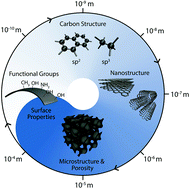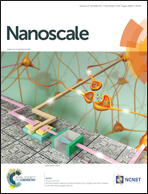Templating for hierarchical structure control in carbon materials
Abstract
Carbon-based materials show a remarkable variety of physical properties. For this reason, they have recently been explored for many advanced applications and emerging technologies. In the absence of actual “chemical” functionalities in these materials, tailoring these physical properties requires control on all levels of the structural hierarchy, from the atomic structure (carbon connectivity, defects, impurities), to the supramolecular level (domain orientations), nanoscopic length scale (domain sizes, porosity), microscopic structure (morphology), and macroscopic aspects (shape, surface chemistry). When preparing carbon materials, all these features can be tailored through the use of hard, soft, or molecular templates. Based on such templating approaches or through their combination, tremendous progress towards hierarchically structured carbon materials has recently been accomplished. Novel carbon nanomaterials such as brick-walled carbon tubes, carbon nanotube forests, coral-like carbon monoliths, or functional carbon nanosheets have become available, some of which exhibit unusual combinations of electronic, mechanical, and chemical properties. This review aims to discuss how the different templating approaches allow the control of structure formation on various length scales, how hierarchical structure formation can be realized, and which challenges remain, such as the detailed control over the carbon connectivity or the surface chemistry.


 Please wait while we load your content...
Please wait while we load your content...